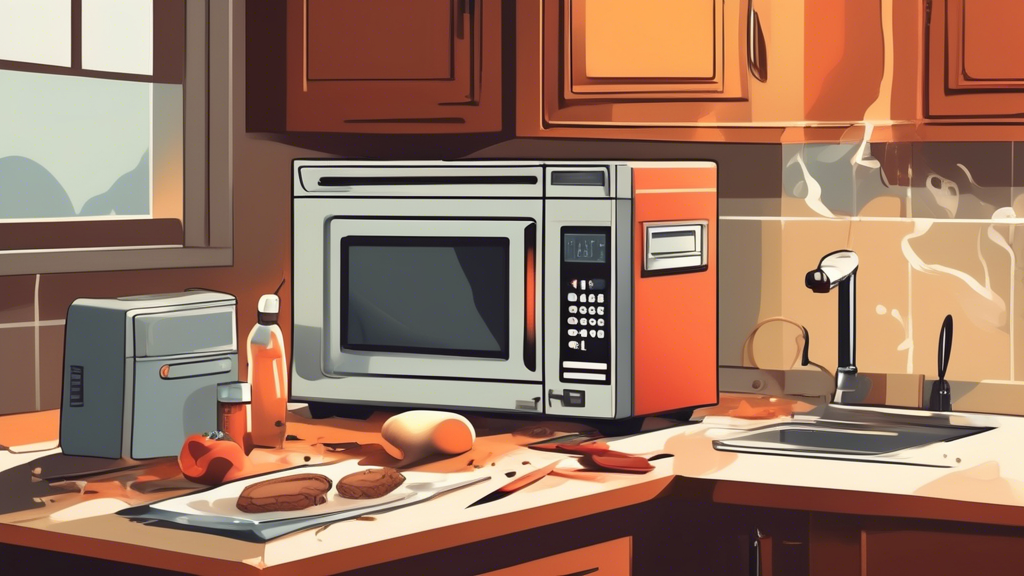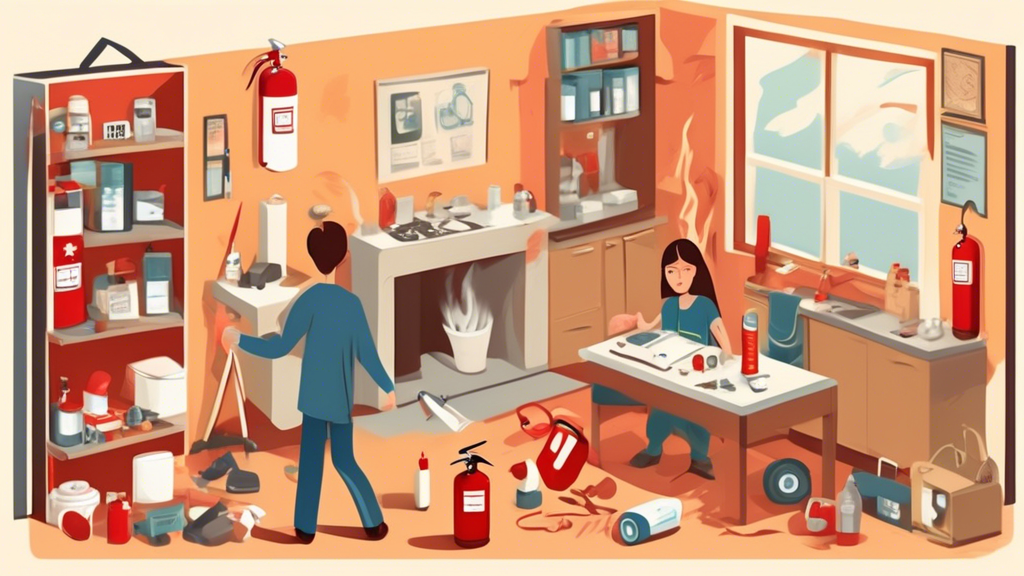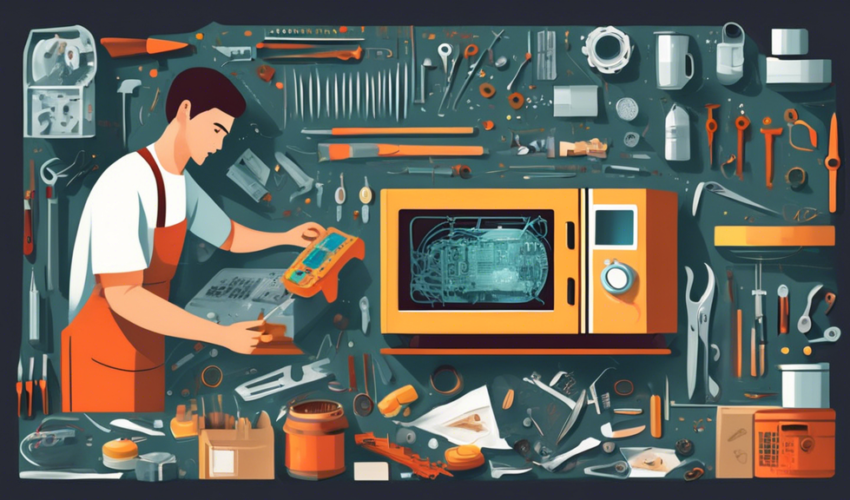Microwaves are an indispensable part of modern kitchens, offering convenience and efficiency in meal preparation. However, like any appliance, they can encounter problems that may hinder their performance or even render them unusable. Understanding the importance of proper microwave operation and maintenance is crucial to extending the lifespan of this handy appliance. In this article, we delve into the common issues that can arise with microwaves, their potential impact on your cooking experience, and effective troubleshooting techniques that can save you time and money. By arming yourself with essential tips for microwave repair, you’ll be better equipped to tackle minor malfunctions at home, ensuring your microwave continues to serve you well. Whether you’re dealing with unusual noises, ineffective heating, or other frustrating signs of malfunction, our comprehensive guide aims to empower you with the knowledge needed to address these challenges safely. As you navigate the world of microwave repair, we’ll also discuss when it’s appropriate to call in a professional, ensuring you balance DIY efforts with expert intervention whenever necessary. Join us as we explore these vital tips and transform the way you approach microwave maintenance and repair.
Common Microwave Issues and Troubleshooting Techniques
Recognizing Signs of a Malfunctioning Microwave
Identifying the symptoms of a malfunctioning microwave is integral to effective microwave repair. Early recognition can prevent further damage, saving both time and money in the long run. Below are some common signs to watch for:
1. Unusual Noises and Smells
If your microwave begins to produce strange noises, this could be an indication of a problem. Typical sounds during normal operation include the hum of the magnetron and the whir of the turntable. However, if you notice grinding, buzzing, or a high-pitched whine, it may signal issues with the motor, fan, or other internal components.
Additionally, any unusual smells emanating from the microwave, such as burning or acrid odors, should not be ignored. These smells can indicate overheating, burnt wiring, or even food particles trapped in the heating element. In these cases, it is crucial to take immediate action to diagnose the problem, as ignoring these signs could lead to more severe issues.
2. Ineffective Heating or Uneven Cooking
A primary function of your microwave is to heat food evenly and efficiently. If you notice that your microwave is failing to heat food properly or leaving cold spots, it may indicate that the magnetron is malfunctioning or that the stirrer fan is not distributing microwaves correctly. It is advisable to perform a simple test by heating a cup of water for two minutes; if the water doesn’t reach a boiling point, it may point to a failure in the heating mechanism.
In addition, if food is cooking unevenly—some parts overcooked while others remain cold—this could result from a malfunctioning turntable. Ensure that the turntable rotates freely and is properly aligned. If not, your microwave may require adjustments or repairs.
Basic Troubleshooting Steps
Before seeking professional help, it is wise to conduct some basic troubleshooting techniques to ensure that the issue isn’t something easily fixable. Below are steps you can take:
1. Checking Power Supply and Outlet Settings
The first step in troubleshooting is to ensure that the microwave is receiving power. Check that it is securely plugged into the outlet and that the outlet is functioning properly. You can test this by plugging in another device to see if it works. If the outlet is dead, you may need to reset the circuit breaker.
Additionally, consider the condition of the power cord. Look for any signs of fraying or damage. If the cord is worn, it might need replacement to restore full functionality to your microwave.
2. Inspecting Door Seals and Latches
A microwave won’t operate if the door isn’t closing properly. Inspect the door seals for any debris or damage. A clean and sealed door is crucial for the microwave to operate effectively. If there is dirt, clean it gently with a damp cloth. If you notice cracks or missing parts in the door seals, it is crucial to replace them.
Check if the door latch is functioning correctly. A faulty latch can prevent the microwave from operating altogether. If the latch isn’t catching, it might require adjustment or replacement, which can often be done easily at home.
3. Understanding Error Codes (if applicable)
Modern microwaves often come equipped with digital displays that feature error codes. Understanding these codes is a significant step toward effective microwave repair. Refer to the user manual specific to your model to interpret any error messages you encounter.
For example, an E1 error might indicate a problem with the door switch, while an E2 could point to an issue with the temperature sensor. Diagnosing these issues based on error codes can save time and help you pinpoint the problematic component, allowing for targeted repairs.
By following these troubleshooting techniques, you can often identify or resolve common microwave issues without needing professional intervention. However, knowing when to seek help can save you from causing further damage or compromising your safety.
Indicators You Need Professional Microwave Repair Services
While many issues can be resolved through basic troubleshooting, some problems require the expertise of a professional. Identifying these situations is crucial for both safety and the longevity of your microwave.
1. Persistent Issues After DIY Troubleshooting
If you’ve followed the troubleshooting steps but the microwave continues to exhibit unusual symptoms, it may be time to call in a professional. Factors like intermittent power loss or strange noises that do not resolve with simple fixes often indicate deeper electrical or mechanical issues. Attempting to operate a microwave with these conditions could be risky, leading to potential hazards such as electrical fires or further damage.
2. Signs of Electrical Faults or Damage
If you notice burning odors, unusually hot exterior casing, or sparking, these are significant indicators of electrical faults. Such issues should be addressed immediately by a qualified technician, as they pose risks not just to the microwave but also to your overall home safety. Do not attempt to fix these problems yourself.
3. Importance of Warranty Considerations
If your microwave is under warranty, it’s advisable to seek professional repair services, as attempting to fix the appliance yourself may void the warranty. Most manufacturers provide authorized service technicians who can diagnose and repair the microwave without compromising any guarantees.
By being vigilant and proactive in addressing common microwave issues, you can ensure safe, efficient operation while minimizing repair costs. Recognizing the signs, conducting essential troubleshooting, and knowing when to call for professional support will contribute to the longevity and effectiveness of your microwave.

Common Microwave Issues and Troubleshooting Techniques
Recognizing Signs of a Malfunctioning Microwave
Identifying the symptoms of a malfunctioning microwave is the first step towards successful microwave repair. Several common indicators suggest that your appliance may require attention.
Unusual Noises and Smells
If your microwave starts making strange noises such as buzzing, humming, or rattling, it may indicate an internal issue. These sounds can stem from a variety of components, such as the magnetron or the turntable motor. It’s crucial to pay attention to these noises; they may suggest that a part is loose or failing.
Additionally, if you notice a burning smell when operating the microwave, it should never be ignored. Burning odors can result from electrical malfunctions, cooking mishaps, or a buildup of food debris. In either case, turning off and unplugging the appliance immediately is essential to avoid further damage or potential fire hazards.
Ineffective Heating or Uneven Cooking
One of the most common complaints regarding microwave performance is ineffective heating or uneven cooking. If your food items are not getting heated thoroughly, or if they cook inconsistently, this can indicate a malfunction. In many instances, the issue arises from a failing magnetron, which is responsible for generating microwave energy. Other possible reasons include a faulty capacitor, issues with the microwave’s high-voltage circuit, or even problems with the turntable motor that leads to uneven cooking.
In some cases, this issue might simply be due to the way food is placed inside the microwave. Overcrowding or improper positioning can lead to uneven results. To troubleshoot this, remove any excessive food items and give them ample room to cook. If the problem persists, further inspection is warranted.
Basic Troubleshooting Steps
Conducting basic troubleshooting can help you identify and possibly resolve issues before seeking professional assistance. Here are some effective microwave repair steps to follow:
Checking Power Supply and Outlet Settings
First and foremost, confirm that the microwave is plugged in and that the outlet is functioning properly. Sometimes, a blown fuse or tripped circuit breaker can disrupt power to the microwave. Test the outlet by plugging in another device to see if it works. If your microwave has a dedicated circuit, ensure that it isn’t overloaded with other appliances.
If, after plugging it into another outlet, your microwave still does not respond, it may indicate a deeper issue with the microwave itself that requires further diagnosis.
Inspecting Door Seals and Latches
Another common issue in microwave repair is failing door seals and latches. If the microwave door isn’t closing properly or the latch doesn’t engage, the appliance may not operate. Ensure that the door seal is clean and free from any debris or food particles. Inspect the hinges and latch mechanism for any signs of damage or misalignment.
If you find any concerns, try gently realigning the latch or replacing the door seal as necessary. Keeping the seals clean and intact is crucial for ensuring that the microwave operates efficiently and safely.
Understanding Error Codes (if applicable)
Many modern microwaves come equipped with digital displays that communicate error codes when issues arise. Familiarizing yourself with these codes can significantly ease the troubleshooting process. Each manufacturer typically provides an accompanying manual that lists the meaning of common error codes.
When an error code appears, consult the manual for troubleshooting tips relevant to that specific problem. In some cases, you may be able to reset the microwave by disconnecting it from the power source for a brief period. If the error code persists after you have followed troubleshooting steps, professional assistance will likely be required.
By taking the time to recognize these signs and employing effective troubleshooting techniques, you can prolong the life of your microwave and minimize the need for extensive repairs. Remember, consistent maintenance is just as important as repairs, so periodically cleaning any spills, inspecting components, and monitoring performance can help you avoid future issues.
For those uncertain about their ability to perform these troubleshooting steps, it is advisable to consult with a professional technician. Making informed decisions early in the repair process will often save time and money in the long run, ensuring that your microwave remains a reliable kitchen appliance.

Safety Procedures and When to Seek Professional Help
Essential Safety Precautions During Microwave Repair
When embarking on a microwave repair, safety should be your top priority. Microwaves, with their complex electrical systems and high-voltage components, can pose serious risks if not handled properly. Here are some essential safety precautions you should take to ensure a safe repair process:
1. **Unplugging the Device Before Inspection**
Always begin by unplugging your microwave before you start any repairs. This simple step eliminates the risk of electric shock while you inspect components or troubleshoot issues. Even if the microwave appears to be off, it can still hold residual energy, particularly in the capacitors. By unplugging it, you significantly reduce the risk of accidental activation and ensure a safer environment for your repairs.
2. **Avoiding Contact with High-Voltage Components**
Upon opening your microwave, you will likely encounter several high-voltage components, such as the magnetron and the capacitor. These parts can store electrical energy long after the microwave has been unplugged. It is crucial to avoid direct contact with these components. If you must work near them, use insulated tools and wear rubber-soled shoes to provide an additional layer of protection. If you are not confident in your ability to work safely around these components, consider seeking professional help.
3. **Using Appropriate Tools**
The right tools not only make repairs easier, but they also enhance safety. Use insulated screwdrivers and tools specifically designed for electrical work. This reduces the risk of short circuits or accidental shocks during repairs, ensuring that you maintain a safe working environment.
4. **Working in a Well-Lit Area**
Ensure you are working in a well-lit space to easily see the components you’re handling. Poor visibility can lead to mistakes that might compromise safety or lead to further damage to the microwave. A clean and organized workspace is also essential, as it minimizes the risk of losing tools or parts, which can extend the repair process unnecessarily.
5. **Reading the Owner’s Manual**
Before starting any repair, take the time to read the owner’s manual for your microwave. This document often contains specific safety warnings and guidelines for repairs. Sometimes, manufacturer instructions may include unique safety concerns that are specific to your make and model, which can help prevent accidents.
Indicators You Need Professional Microwave Repair Services
While many minor issues can be resolved through DIY troubleshooting, some situations signal the need for professional intervention. Recognizing these indicators can save you time and potentially costly mistakes. Here are some signs that it may be time to seek professional microwave repair services:
1. **Persistent Issues After DIY Troubleshooting**
If you’ve attempted the basic troubleshooting steps—such as checking power settings, inspecting door latches, or replacing fuses—but the microwave continues to malfunction, it’s best to call in a professional. Persistent issues may indicate more serious problems within the appliance, such as damaged wiring, faulty components, or issues with the magnetron. Attempting further repairs without the proper expertise can lead to additional damage or even safety hazards.
2. **Signs of Electrical Faults or Damage**
Keep an eye out for visible signs of electrical faults, such as burnt wires, smoke, or unusual smells, which may indicate serious problems that could compromise safety. If you notice scorch marks inside or around the microwave or hear unusually loud popping or crackling sounds during operation, it’s time to consult a professional. Electrical faults can be dangerous and should not be repaired haphazardly.
3. **Routine Problems with Heating**
If your microwave is consistently failing to heat food evenly or at all, this could be a sign of a failing magnetron or other internal components. While replacing a magnetron is possible through DIY methods, it requires specific skills and knowledge of electrical systems. If you’re not experienced, it is advisable to seek professional help, as improper handling can lead to more significant issues or unsafe conditions.
4. **Importance of Warranty Considerations**
If your microwave is still under warranty, attempting to repair it yourself can void that warranty. Always check the terms of your warranty before making any repairs. If you suspect a serious issue with a warranted appliance, contacting the manufacturer or a certified repair service is often the smartest choice. They can address the problem while ensuring that your warranty remains intact.
Recognizing the boundaries of DIY repairs is crucial for safety and effective microwave repair. Understanding when to call a professional can help you avoid costly mistakes and ensure your appliance is repaired properly, minimizing the risk of future malfunctions.
In conclusion, effective microwave repair hinges on a combination of practical knowledge, attentiveness to detail, and prioritization of safety. By familiarizing yourself with common issues, such as unusual noises or inefficient cooking, you can identify problems early and implement basic troubleshooting techniques. Remember to always check power connections and inspect door seals and latches, as these simple steps can often resolve issues without the need for extensive repairs.
Safety cannot be overstated in the context of microwave repair. Always remember to disconnect the appliance from power before undertaking any inspection or repair work, and steer clear of high-voltage components to prevent any accidents. While many issues can be addressed through DIY methods, it’s crucial to recognize when a problem may require professional intervention. Ongoing concerns, signs of electrical damage, or any uncertainties about safe practices warrant the expertise of a qualified technician.
In balancing DIY repairs with professional help, the overarching goal is to maintain your microwave in optimal condition for safe and effective operation. Acting promptly upon noticing any issues not only ensures the longevity of your appliance but also reinforces safety in your kitchen environment. By equipping yourself with these essential tips, you will be better prepared to manage microwave repairs wisely, making informed decisions that reflect both practicality and an understanding of your limits when it comes to appliance maintenance.

